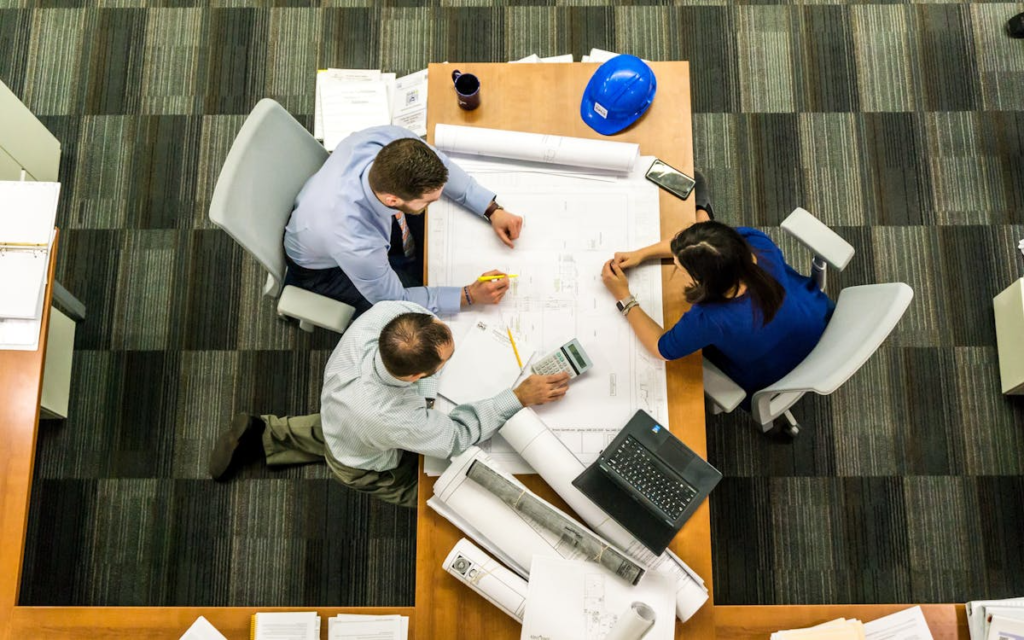Waste Bin Rentals and Design Planning: How Traditional Interior Designers in Pacific Palisades Manage Remodeling Waste
When a Pacific Palisades interior designer takes on a home renovation project, design is only half the story.
The other half, often overlooked, is managing the mountain of waste that comes with construction and remodeling.
Whether it’s marble remnants, drywall scraps, or old fixtures, every redesign generates clutter that must be removed efficiently and responsibly.
The Hidden Side of High-End Design
In Pacific Palisades, design projects often involve gut renovations of luxury homes with ocean views and custom-built interiors.
A designer’s creative vision might focus on layout, texture, and mood boards, but there’s also the logistical puzzle of debris.
Waste disposal isn’t glamorous, yet it’s vital for keeping projects organized and timelines intact.
For example, one designer working on a cliffside renovation shared how her team underestimated the waste volume during demolition.
Without the right waste management plan, her project fell behind schedule by nearly two weeks.
That’s when she learned that waste bin rentals aren’t just a convenience, they’re a necessity.
Pacific Palisades interior designer professionals often partner with local bin rental services to streamline cleanups.
It’s a detail that separates seasoned designers from amateurs: knowing how to manage both design flow and waste flow seamlessly.
Why Waste Bin Planning Matters in Luxury Projects
Remodeling a home in Pacific Palisades means strict community rules, limited driveway access, and narrow streets lined with manicured landscapes.
You can’t simply park a massive dumpster outside for days without permits or coordination.
That’s where strategic bin rentals come in: right-sized containers, scheduled pickups, and eco-friendly sorting.
A veteran designer once joked, “The last thing my clients want to see on their security cameras is a giant orange dumpster ruining the ocean view.”
To prevent that, designers coordinate early with rental providers, ensuring bins are discreetly placed and promptly swapped when full.
This level of detail not only keeps neighbors happy but also upholds the polished reputation Pacific Palisades projects are known for.
How Designers Integrate Waste Management into the Planning Phase
Smart designers plan for waste removal the same way they plan lighting or cabinetry. Here’s how it usually unfolds:
- Initial Assessment: Before demolition starts, designers calculate waste volume from flooring, fixtures, and furniture removal.
- Scheduling Bin Deliveries: Aligning bin drop-offs with demolition days ensures smooth transitions without clutter piling up.
- Material Sorting: Recyclables like wood and metal are separated from landfill materials, aligning with California’s sustainability codes.
- Client Communication: Designers brief homeowners about expected noise, dust, and waste removal schedules to avoid surprises.
This proactive approach not only saves time but also makes cleanup part of the creative process rather than an afterthought.
Eco-Friendly Design Choices Start with Waste Awareness
Today’s Pacific Palisades homeowners care deeply about sustainability. Designers who emphasize waste-conscious planning instantly stand out.
Some reuse old beams as decorative elements, refinish cabinets instead of replacing them, or donate leftover materials to local charities.
In one remodel near Temescal Canyon, a designer salvaged reclaimed wood from the original home’s framing to create floating shelves.
Not only did it cut costs, but it also gave the space a story rooted in its own history.
These small, mindful decisions help designers balance aesthetics, budget, and environmental responsibility.
The Role of Local Vendors in Streamlined Design Projects
Working with trusted local partners simplifies everything.
Many interior designers in Pacific Palisades develop long-term relationships with waste removal companies, carpenters, and artisans.
These collaborations foster faster response times and better accountability.
A project manager I once spoke to explained how his firm keeps a preferred vendor list organized by response rate and eco-compliance.
He said, “When you’ve got a two-million-dollar home under renovation, you don’t gamble on someone showing up late with the wrong bin size.”
That reliability becomes part of the designer’s brand, precision from concept to cleanup.
Navigating Permits and Neighborhood Regulations
Pacific Palisades isn’t the kind of place where you can just roll a dumpster into the street.
The city enforces strict rules for waste disposal, noise limits, and street obstruction. Designers must apply for short-term placement permits and often need homeowner association approvals.
Ignoring those details can cost thousands in fines or cause weeks of delay. Experienced designers factor these permits into their project calendars from day one.
They also coordinate with haulers who understand local compliance standards, ensuring every bin is placed legally and safely.
When Luxury Meets Logistics
Luxury clients expect a spotless experience, even during demolition. That means the site should remain as tidy as possible throughout the remodel.
Designers often schedule nighttime waste pickups or use smaller rolling bins to minimize visibility.
One Pacific Palisades project I observed used compact, color-coded containers to separate recyclable glass, wood, and drywall.
The team labeled each bin by phase: demolition, installation, and finishing. By the end of the week, the site looked more like an art studio than a construction zone.
Turning Waste Management into a Design Statement
Forward-thinking designers see opportunity even in waste planning. Some collaborate with artists who repurpose discarded materials into statement pieces.
Others document the “before and after” cleanup process as part of their project storytelling, showing clients the transformation from chaos to beauty.
A local designer once turned leftover marble fragments into a mosaic backsplash that became the highlight of the client’s kitchen. It became a conversation piece that reflected the home’s evolution.
Key Takeaways for Homeowners
If you’re planning a remodel in Pacific Palisades, keep these points in mind:
- Hire designers who plan beyond the surface. Waste management reflects attention to detail.
- Ask about eco-friendly disposal. Many materials can be repurposed or recycled.
- Understand local restrictions. Neighborhood rules may affect bin placement or pickup times.
- Coordinate schedules early. Align demolition, delivery, and waste removal for smoother workflows.
When homeowners and designers collaborate from day one, the result is not just a beautiful space, but also an efficient, responsible transformation.
A Final Word
Behind every polished, magazine-worthy Pacific Palisades home lies a well-managed system of logistics.
From color palettes to concrete dust, everything moves in harmony when waste is handled with care.
That’s the hallmark of a true professional, balancing creativity with practicality.
The next time you admire a flawless interior, remember that great design doesn’t end with the final reveal. It starts with a plan, and yes, even a perfectly placed waste bin.
- The Hidden Side of High-End Design
- Why Waste Bin Planning Matters in Luxury Projects
- How Designers Integrate Waste Management into the Planning Phase
- Eco-Friendly Design Choices Start with Waste Awareness
- The Role of Local Vendors in Streamlined Design Projects
- Navigating Permits and Neighborhood Regulations
- When Luxury Meets Logistics
- Turning Waste Management into a Design Statement
- Key Takeaways for Homeowners
- A Final Word




